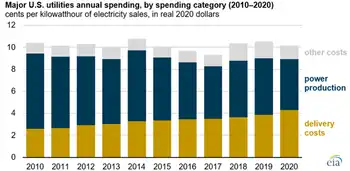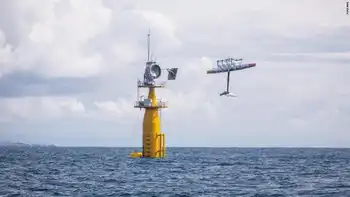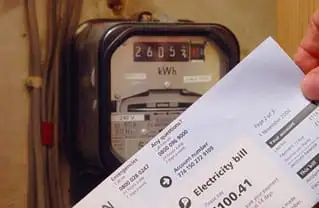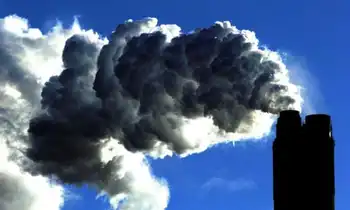Wyoming coal at bottom of 'value chain'
By Casper Star-Tribune
High Voltage Maintenance Training Online
Our customized live online or in‑person group training can be delivered to your staff at your location.

- Live Online
- 12 hours Instructor-led
- Group Training Available
So is Wyoming actually on the cusp of consummating this long talked about matchup of raw coal wealth with "value-added," advanced coal technology, which will finally secure the state's future in a clean energy world?
As recently as this summer, the answer was a solid, "Maybe, probably someday." Now with the financial crisis spiraling, the list of maybes seems to grow longer daily.
"The price of oil gets cut in half. The investor, like a shy and half-sure bride, starts backing away from the altar. It's going to take her to get back there," said Samuel Western, a Wyoming writer who specializes in the economic history of the West.
Getting the bride back to the altar is ultimately a matter of economics and politics. So what could go wrong?
Wyoming's governor, university and Legislature have been hard at work to dress up the state's weaknesses toward an industry of clean coal refineries. The G.E. deal is focused on Powder River Basin coal's lower Btu and high-elevation disadvantage. Wyoming lawmakers were among the first in the nation to enact a legal framework to allow geologic carbon sequestration.
Those efforts are not insignificant given Wyoming's economic success with its dig-and-ship mentality and infrastructure.
In less than 50 years, on a per capita basis, Wyoming has risen from one of the poorest states in the union to one of the wealthiest, according to Western.
"The wealth is coming in faster than ever before. During the first six months of 2008, Wyoming collected nearly one billion dollars ($955,169,662) in federal coal royalties," said Western.
To put that figure into context, Wyoming's annual state budget did not cross the billion-dollar mark until the 1981-1982 biennium.
Based on the wild fluctuations of oil, investors around the world have not shown much sustained interest in financing American clean coal technology. Most federal backing for clean coal technology has been focused on eastern coal states. Plus, there's the legal and logistical puzzle of carbon sequestration.
Although it is the market outside Wyoming — California for example — that will likely influence the technology decisions, coal states are in competition for building foundations with the technology developers.
So for Wyoming policy-makers, it's a matter of seeing beyond the state's currently flush coffers to a more uncertain future.
"From a practical and investment point of view, why bother? Not until Wyoming feels economic consequences of dig-and-ship will we change," said Western.
As the world economic meltdown threatens investment for clean coal, it also re-enforces Wyoming's caution toward moving too fast toward clean coal.
"The decline in (energy) prices also reinforces Wyoming's fundamentally conservative mindset, which says, 'See? I told you we shouldn't jump the gun on this clean coal business,'" said Western.
The oil embargo of the '70s forced the world of "advanced coal" technologies to flirt with Wyoming's well-endowed resources, but it only resulted in a half-dozen rocky attempts with coal-enhancement ventures. Decades later, $160 per barrel oil rekindled the courtship only to result in Evergreen Energy Inc.'s start-up in 2006 and shut-down in 2007 of its Fort Union plant, creating and cutting 50 jobs.
Before that it was FutureGen's flat denial that many blame on not being well-connected enough with the "It" crowd (Congress).
Now that climate change and energy demand are promising to take coal and "clean" — or at least advanced — technology to the high school prom, there are a number of furtive whispers about the two finally hitting the dance floor arm-in-arm in Wyoming. Overtures such as DKRW's promised coal-to-gasoline Medicine Bow refinery seem to be taking form — at least on paper.
But the completion date for that project was recently pushed from 2010 to 2013.
Other overtures include Peabody Energy's partnership with GreatPoint Energy to build several coal-to-natural gas plants in the Powder River Basin. Casper-based GasTech is partnered with BP to launch underground coal-gasification. Investment mogul Warren Buffet recently purchased a large acreage of coal in the Powder River Basin, presumably for underground coal-gasification.
There are 305 million people in America today, and they all want iPods, big-screen TVs and complicated fish tanks. They're plugging into a fleet of coal-fired and nuclear power plants mostly designed and built in the 1960s and 1970s.
In just 40 years, the U.S. population is expected to grow 44 percent to 439 million people.
"We have a fleet of coal-fired power plants and nuclear power plants that are 30 to 40 years old, with no agreement on how to continue them much less on how to replace them at a time when demand is asking for a second and third fleet," said Robert Keyser of Douglas-based Wyoming Gasification & Synfuels Co., LLC.
The volume of Big Wyoming's world-class coal, natural gas, uranium and wind energy resources is modest compared to the scale of the world's energy dilemma.
The world population of 6.7 billion is projected to grow to nearly 9 billion in the next 40 years — and they all want to enjoy a decent standard of living. A few wind turbines here, some efficient light bulbs there, simply doesn't address the scale of the problem.
Rob Hurless, energy and telecommunications advisor to Gov. Dave Freudthenal, said recently that meeting an estimated 55 percent increase in world energy consumption by 2030 will require a build-out of all energy resources, particularly coal.
"The issue is, 'Can we meet the demand?' Not whether coal will be a part of it," Hurless said at a recent energy and climate change forum.
Conventional wisdom among pragmatic energy thinkers is that the only way to get to that answer is to include coal without its signature greenhouse gas emissions. That means the era of dig-and-ship-and-burn will eventually draw to a close — someday.
"How do we provide power to 400 million Americans in the next 40 years?" asks Keyser. "As a nation, we don't respond well to the long-range standpoint. We're in a complacency standpoint."
Why should Wyomingites care? Because, as state economists have pointed out for years, Wyoming is overly reliant on minerals.
After nearly 10 years of booming energy development, the state's economy is riding high. But it is far less diversified than it was during the 1990s when energy industries were in a slump, according to the state's economic analysis division.
"Our current tax structure relies on the carrying capacity of this industry," Buck McVeigh, administrator of Wyoming's economic analysis division, said this summer. "Yeah, we can diversify our economy. But as we drift away from minerals (as a revenue resource) there would have to be a change in our tax structure."
That sort of drift would present painful decisions for state lawmakers. That's why it may be a better bet to invest in clean coal technology without necessarily agreeing with the climate change concern that's pushing it.
Wyoming is a conservative state that moves incrementally when it comes to change, said Western. To the extent that Wyoming can control its own destiny in a clean energy future, it is making some progress.
"Clean coal technology is expensive technology. For the Legislature to invest in, through UW, a pilot clean coal technology plant with G.E. was a major breakthrough," said Western. "Symbolically, it showed we're capable of change."











